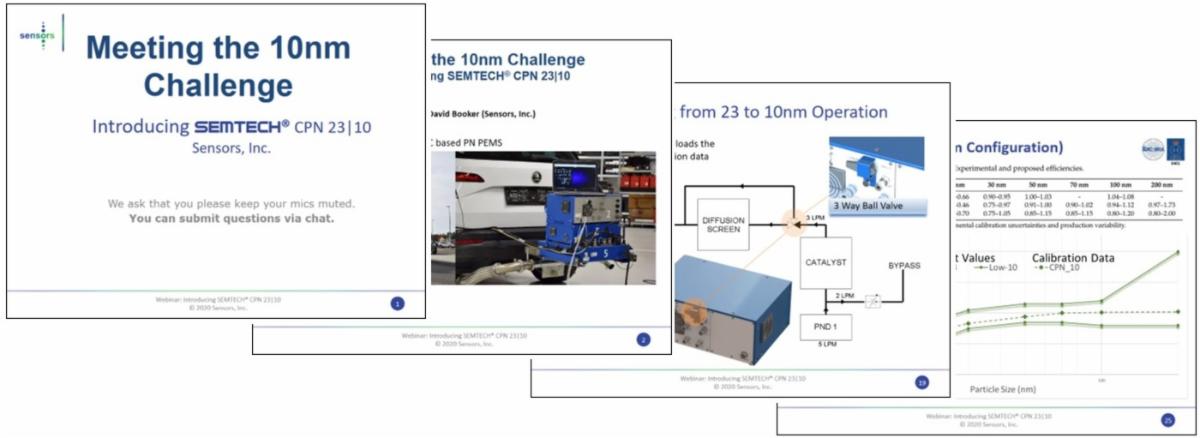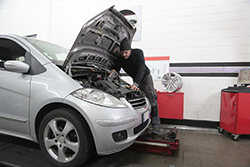Newsletters
February 2021 Edition
Euro VI / 6 and Beyond - "a roadmap for innovative solutions for cleaner air"
World-wide automotive performance-based emission regulations are continually evolving and are routinely criticized for imposing overly burdensome requirements that contain an extraordinary level of prescriptiveness, which make it difficult to fully comprehend and implement. Although these performance-based regulations are widely proclaimed as a superior approach compared to technology or design standards, the cost of drafting, monitoring and enforcing the rule needs to be valued by what it ultimately delivers, to combat environmental degradation and climate change.
Although pollution has no boundaries, countries and continents are contemplating adaptations / amendments / additions to deliver air quality improvements. For example, the International Council on Clean Transportation (ICCT) recently published a report with recommendations for post Euro VI / 6 standards that include new limits for CH4, NO2, N2O, NH3 in addition to measuring ultrafine particles down to 10nm and the solid and semi-volatile fraction. The reliance on real driving emissions using Portable Emissions Measurement Systems (PEMS) is also expected to increase. In September 2020, the European Parliament voted (495 votes to 169) to phase out conformity factors for new car emissions under real driving conditions by September 2022. Under the EU RDE regulations, cars were initially allowed to admit 2.1 times the legal NOx limit of 80 mg/km (168mg/km). However, this NOx conformity factor is reviewed annually and has recently been reassessed at 1.36 in 2020.
Standardization / metrology-based initiatives including the European Committee for Standardization (CEN), the UN working Party on Pollution and Energy (GRPE), and various EU member states metrology institutes (e.g. German Physikalisch-Technische Bundesanstalt (PTB)) are developing additional Standards for RDE measurements. Moreover, in North America, the USEPA, EMA and CARB are contemplating a second measurement allowance program to look at recent PEMS developments and specifically the need to measure very low NOx emitting vehicles (for example 0.02 g/bhp-hr).
Sensors, Inc. continues to develop and provide innovative regulatory-compliant gas and particulate measurement solutions to meet the new requirements, and moreover, where possible, provide regular and meaningful updates / upgrades to its current SEMTECH® PEMS. In ClearSkies News, we endeavor to provide you with an insight into the new products and services we are actively developing to help us all meet both the current and future regulatory requirements. Our new NDUV NOx analyzer significantly exceeds the current RDE 2018/1832 low range accuracy and drift requirements for both NO and NO2. Additionally, cross interferences due to hydrocarbons and other gases are reduced to insignificant levels in this design.
The European Commission recently (June, 2020) released a paper assessing PN PEMS operating down at 10nm. In this jointly authored paper, Sensors’ newly modified SEMTECH® CPN 23|10 performed very well and supported the JRC case for a future regulation. The product (with upgrade options for existing customers) was recently introduced to the community through a series of webinars, newsletters and product announcements in September/October, 2020. This webinar (with English and Chinese notes) is available by request.

In addition to being one of the PEMS market leaders, Sensors, Inc. is also very active in providing analyzers for the periodic technical inspection of motor vehicles throughout their lifetime. Particulate number being the latest addition to the other analyzers.
These accurate low-cost, durable analyzers / benches play an important role in the surveillance monitoring of motor vehicles as well as identifying vehicles that have emission abatement systems that have been tampered.
Dr. David Booker
Chief Technology Officer
Sensors, Inc.
SEMTECH® Low CO Module
Diesel and gasoline engine manufacturers have challenged developers of Portable Emissions Measurement Systems (PEMS) to provide solutions for the measurement of Carbon Monoxide (CO) at very low levels for several years. These measurements are useful in engine design and development, and are not typically seen due to regulatory requirements to capture “spikes” in CO that can be as much as 1-2% during certain engine events, e.g. hard accelerations.
Sensors, Inc. has designed and developed a solution for this industry need, a modular low CO analyzer that is fully integrated with the Sensors’ SEMTECH® DS+ Portable Emissions Measurement System (PEMS).
Key features include:
- Pressure compensation for altitude testing
- Heated enclosure to minimize drift and prevent condensation
- CO2 measurement channel for cross-interference compensation
Specifications for the analyzer can be found at our SEMTECH® DS+ Heavy Duty page or our SEMTECH® DS+ Light Duty page.
Tips
Our applications group has over twenty years of experience operating SEMTECH® systems. This experience has led to major contributions to the design and development of the most advanced and innovative PEMS – including the current SEMTECH® DS+.
This edition of our newsletter provides Tips for Testing from our Applications Group on running successful cold weather in-use tests, drawing on their extensive experience in harsher environments, as well as testing on dynamometers in standard test cells.
Testing in Cold Weather

- Install analyzers inside vehicle to minimize drastic temperature changes between inside heated garage and outside weather.
- Route the system’s drain hose outside the car along the backside of the heated line. Shorten its exposed length to minimize blocking the hose by frozen water.
- Install weather probe away from sources of heat since its goal is to measure engine intake air temperature and humidity.
Testing in Dynamometer Test Cells

- Install analyzers away from sources of heat and in a well-ventilated area.
- Route the system’s drain hose back into the exhaust stream, or outside the test cell.
- Always use Nitrogen or Zero Air bottles to ‘zero’ analyzers.
- Always use a cooling fan directed towards Sensors Flow Tube to cool its electronics.
- Leak check exhaust pipes from the engine to the Exhaust Flow Tube (use gaskets if needed).
Coming Product Announcement
Sensors, Inc. will introduce a significant upgrade to its PEMS NOx measurement capability March, 2021. Demonstrated improvements in key performance metrics such as drift, warm-up time and operating temperature range will be made public at that time.
Look for major presentations highlighting these innovations at the next Coordinating Research Council (CRC) Conference March 8-11, as well as the UC Riverside PEMS Conference March 11-12. We look forward to sharing news of these exciting enhancements with you.
Resources
“Recommendations for Post-Euro 6 Standards for Light-Duty Vehicles.” International Council on Clean Transportation. 3 Oct. 2019
theicct.org/sites/default/files/publications/Post_Euro6_standards_report_20191003.pdf
”Assessment of 10-Nm Particle Number (PN) Portable Emissions Measurement Systems (PEMS) for Future Regulations.” EU Science Hub - European Commission, 10 June 2020
ec.europa.eu/jrc/en/publication/assessment-10-nm-particle-number-pn-portable-emissions-measurement-systems-pems-future-regulations